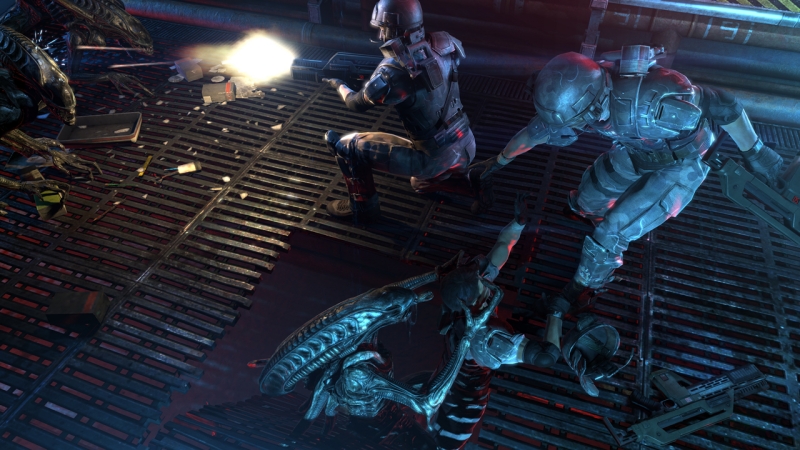For when Aliens movie fandom absolutely must be quenched.
SEGA and Gearbox's Aliens: Colonial Marines follows in the wake and enthusiasm of WayForward's critically lauded Aliens: Infestation for the DS. Like Infestation, it's filled to the brim with the kind of love and attention to detail that only a team of dedicated fans can bring to a project. Aliens: Colonial Marines, for all intents and purposes, is being developed as the true sequel to Aliens, and the developers have taken great pains to make it fit canonically in the trilogy of Alien, Aliens, and Alien 3 (Alien: Resurrection takes place so far down the timeline they weren't worried about integrating).
Every aspect of the design has been retrofitted to look like that future vision that James Cameron created with the film in 1986. The designers spoke with Ridley Scott and were able to see his notes on the original Alien script, looked at unused designs for the second film, and commissioned new design work from original designer Syd Mead. The attention to detail and authenticity in the look are astonishing.
Aliens: Colonial Marines takes place after the events of Alien 3, as the marines are arriving at planet LV-426, 17 weeks after Ripley, Hicks, Knute, and Bishop escaped. We were shown a level on the planet, in the wasted remains of Hadley's Hope. As we skulked through the dark, part of the mission involved retrieving one of the autoguns from the last stand in the basement during the extended cut of the film, a section with the smart gun (very fun), and an in-lair section with some Stalker Aliens—who, we were told, were the ones from the first film, couldn't be tracked with the motion tracker, and were much more sinister—all just felt so right and kept with the style and pacing of the film.
A second level took place before the first we were shown and involved a race against time to storm the bridge of the not-quite-derelict spaceship Sulaco filled with armored soldiers. This section was amazingly tense, and while it lacked the dreaded xenomorphs (the developers referred to all Aliens as "Xenos," even using the language of the film), the James Horner score was a constant reminder of the high stakes. Here, I was told, Syd Mead produced new designs in the same style as the original film to help flesh out the new ship.
Colonial Marines is a bit of a throwback in gameplay. As you move forward through levels you find health and armor packs, reminiscent of a bygone era of first-person shooters. It's a great mix of retro and new, as enemies (aliens or humans) will try and flank you, so you have to be looking around constantl or paying attention to your motion tracker.

In the multiplayer, players can play as both Aliens and Colonial Marines with different types or loadouts for each. Playing as the Aliens was surprisingly well-balanced, as their agility, speed, and deadly attacks makes up for their lack of firepower. In either single or multiplayer, the experience you earn is cumulative, and translates across the board to either mode. As you level and earn weapon unlocks, these can be used in either mode of the game.
Releasing on February 12, 2013, Aliens: Colonial Marines looks to be the decisive Aliens game, with everything meticulously managed and designed, right down to individual bolts and android shoes. It puts you in a Marine's armor, and while you can't be Bill Paxton's Hudson himself, it's hard not to yell "Game over, game over!" as the xenomorphs swarm across the threshhold and flank you, slashing and reducing your armor to paper.
And that's exactly what an Aliens game should do.










